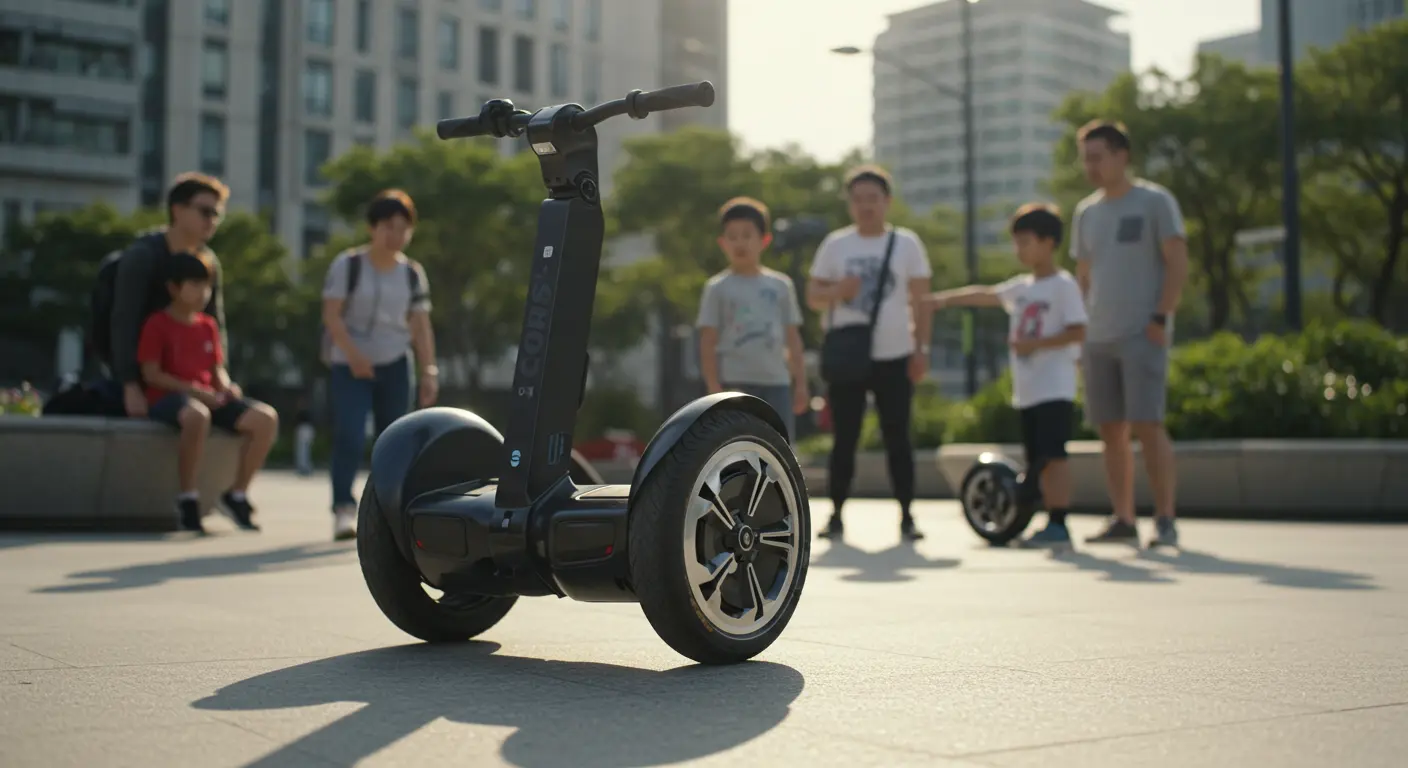Self Balancing Bike – How They Work and Types Available
Technologies Behind Self Balancing Bikes
-
Gyroscopic Stabilization: These systems rely on mechanical gyroscopes or sophisticated electronic MEMS sensors, which detect angular velocity and counteract unwanted changes in orientation.
-
Comprehensive Sensor Arrays: A network of sensors—accelerometers, inclinometers, and position detectors—continuously monitors the bike’s tilt and spatial orientation. Higher-end models include cameras and proximity detectors for environmental awareness.
-
Closed-Loop Control Systems: Operating in real-time, these intelligent systems constantly evaluate the bike’s current stance against its ideal upright position, using algorithms like PID (Proportional-Integral-Derivative) to make smooth, predictive corrections.
-
Alternative Balance Methods: Innovative approaches like Honda’s Riding Assist deliberately abandon bulky gyroscopes, opting instead to dynamically manipulate steering geometry (rake and trail) to maintain balance at low speeds.
-
Power Management: High-capacity batteries paired with intelligent power distribution networks are essential for maintaining uninterrupted operation of these critical balancing mechanisms.
-
Artificial Intelligence (AI): Machine learning algorithms adapt with riding conditions and individual user patterns, enhancing system responsiveness through predictive adjustment capabilities for different terrains and speeds.
-
High-Speed Communication: Ultra-low-latency internal communication networks enable rapid data exchange between sensors and actuators, which is critical for real-time balance control.
-
Advanced Materials: Lightweight composites reduce system weight while preserving structural integrity, while shape-memory alloys can actively change shape to assist in balance adjustments.
-
Predictive Analytics: Emerging systems use GPS, mapping data, and rider behavior patterns to anticipate balance requirements proactively, such as adjusting for an upcoming curve.
The self-balancing bike landscape has changed significantly in recent years. Today’s market offers a wide range of options, from nimble personal mobility devices to sophisticated motorcycles equipped with advanced stabilization technology. Each variant represents a distinct philosophy in addressing the balance challenge that has historically made two-wheeled vehicles intimidating for many potential riders.
Honda has become a leader in motorcycle self-balancing technology with their innovative Riding Assist system. Honda’s approach is unique: Their engineers deliberately rejected the conventional gyroscope approach. Instead, they developed a robotics-inspired mechanism that intelligently adjusts the front fork’s angle to maintain stability—especially effective at low speeds or complete stops. This approach provides a remarkably natural riding experience while providing important safety advantages.
Yamaha has taken a different approach with their concept MOTOROiD concept. It uses the Active Mass Center Control System—a technology that enables the bike to achieve balance by dynamically redistributing its center of gravity in response to changing conditions. More impressively, the MOTOROiD can actually recognize its owner and move autonomously, demonstrating how self-balancing technology is going beyond basic stabilization to offer interactive riding experiences.
For riders seeking enhanced protection alongside self-balancing capabilities, Lit Motors offers the AEV (Auto-balancing Electric Vehicle). This hybrid vehicle that bridges the gap between motorcycles and cars. Fully enclosed and equipped with comprehensive safety features including seatbelts and airbags, the AEV maintains the maneuverability and efficiency advantages of traditional motorcycles. Its gyroscopic stabilization system generates sufficient force to resist being toppled, even when confronted by a larger vehicle.
The market includes more than these advanced motorcycles, with various of compact personal mobility devices with self-balancing technology. These urban-focused solutions target commuters and short-distance travelers, offering an entry point for those curious about self-balancing vehicles without the commitment of a full-sized motorcycle. As technology continues to advance, expect even greater diversification in available self-balancing options.
Popular Models and Brands of Self Balancing Bikes
-
Honda Riding Assist: Integrated into Honda’s motorcycle lineup, this technology avoids traditional gyroscopes, employing a robotics-inspired system that dynamically adjusts front fork geometry for optimal balance, especially at low speeds and stops.
-
Yamaha MOTOROiD: This concept uses an Active Mass Center Control System that intelligently redistributes the bike’s center of gravity to maintain stability. It also incorporates AI, enabling it to recognize its owner and move autonomously.
-
Lit Motors AEV: A fully enclosed, auto-balancing electric vehicle that combines motorcycle agility with comprehensive car-like safety features. It uses powerful gyroscopes to stay upright and includes features like seatbelts and airbags.
Many startups are also developing new designs tailored for specific applications—from sleek urban commuters to adventure-ready recreational vehicles. As this technology matures, we anticipate broader affordability and widespread market adoption across diverse riding segments.
Benefits of Using Self Balancing Bikes
-
Enhanced Safety: This technology greatly reduces the risk of common low-speed or stationary tip-overs, a major cause of motorcycle accidents.
-
Greater Accessibility: By reducing the physical demands of managing heavy machinery, this technology makes motorcycling accessible to a broader audience for riders with physical limitations and reduces fatigue on long rides.
-
Improved Low-Speed Handling: These systems enable effortless maneuvering through congested traffic and confined spaces, eliminating the need for awkward “duck-walking.”
-
Economic Advantages: Self-balancing systems reduce repair costs by preventing costly drops while potentially qualifying riders for reduced insurance premiums due to the lower accident risk.
-
Advanced Rider-Assist Systems: Modern models use sensor networks for features like automatic emergency braking and adaptive headlights that improve visibility during turns.
Self-balancing bikes incorporate safety systems that go beyond basic stability benefits. Honda’s Riding Assist Technology demonstrates this advancement—an innovation that helps prevent falls during motorcycling’s most vulnerable moments. Whether navigating low-speed maneuvers or coming to a complete stop, the system continuously monitors positioning and executes precise micro-adjustments to steering and balance mechanisms. This helps eliminate the most common motorcycle accident causes, all without requiring any rider intervention.
For riders seeking maximum protection, Lit Motors’ AEV takes a different approach in two-wheeled safety philosophy. Traditional motorcycles depend entirely on rider skill for accident avoidance. The AEV creates a protective sanctuary around the rider. Car-like safety features—including multipoint seatbelt systems and strategically positioned airbags—change the safety equation for powered two-wheelers. This enclosed design prioritizes impact protection over mere fall prevention.
The Future of Self Balancing Technology
Self-balancing technology is set to transform two-wheeled transportation, developing from simple stability systems into smart, adaptive machines. Future iterations—building upon Honda’s Riding Assist foundation—will enable semi-autonomous operation. Imagine bikes that follow their owners like loyal companions or navigate independently to designated pickup points.
The rider-machine relationship is changing significantly. Prototypes like Yamaha’s MOTOROiD feature facial recognition and intuitive gesture controls, enabling personalized experiences. These adaptive systems will automatically calibrate riding modes based on individual skill levels, current road conditions, and rider fatigue. This creates a symbiotic relationship between human and machine.
The next step is smart infrastructure integration through vehicle-to-everything (V2X) communication. Imagine bikes seamlessly connecting with traffic management systems and neighboring vehicles, anticipating hazards before they materialize and optimizing routes in real-time. This could significantly reduce accidents. As battery technology improves, these sophisticated systems will transition from luxury features to standard equipment, changing motorcycle safety and accessibility for generations to come.







